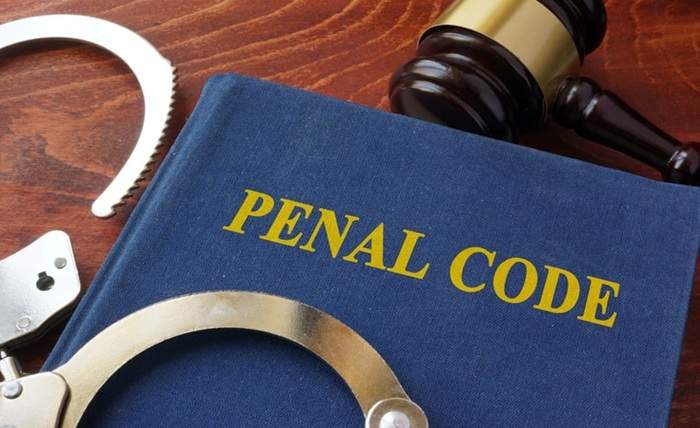
California law enforcement uses specific code numbers when making arrests, filing charges, and documenting crimes. Whether you hear “211” over a police radio or see “459 PC” on a charging document, these numbers reference sections of the California Penal Codes list that define criminal offenses across the state.
While the Penal Code contains hundreds of sections, some appear far more frequently than others in arrests and prosecutions. Knowing the basics about common criminal statutes gives you a better grasp of what you might be facing.
How the California Penal Code Works
The California Penal Code is the primary collection of criminal laws in the state.
The code divides into six main parts:
- Part 1: Crimes and Punishments (the bulk of criminal offenses)
- Part 2: Criminal Procedure
- Part 3: State Prisons and County Jails
- Part 4: Prevention of Crimes
- Part 5: Peace Officers’ Memorial
- Part 6: Control of Deadly Weapons
Most criminal charges reference Part 1, which covers everything from theft to violent crimes. Each section gets identified by its number followed by “PC” (Penal Code).
Property Crimes Californians Encounter
Property crimes make up a significant portion of criminal cases in California. These offenses involve taking or damaging someone else’s property without permission.
- Petty theft (Penal Code 484/488 PC):
Taking property valued at $950 or less. This misdemeanor carries up to six months in county jail and fines up to $1,000.
- Grand theft (Penal Code 487 PC):
Taking property valued over $950, or specific items like firearms or vehicles regardless of value. Prosecutors can charge this as either a misdemeanor or felony.
- Burglary (Penal Code 459-460 PC):
Entering any structure with intent to commit theft or a felony inside. First-degree burglary involves residential properties and carries two to six years in state prison. Second-degree burglary covers commercial properties and businesses, with penalties ranging from county jail time to three years.
- Robbery (Penal Code 211 PC):
Taking property from someone’s person or immediate presence using force or fear. Unlike theft, robbery always qualifies as a felony because it involves direct confrontation with a victim.
- Shoplifting (Penal Code 459.5 PC):
Created by Proposition 47 in 2014, this charge applies when someone enters an open commercial establishment during business hours intending to steal property valued at $950 or less.
Violent Crimes Under California Law
Violent crimes involve force, threats, or physical harm to others. These offenses carry some of the harshest penalties in the Penal Code.
- Assault (Penal Code 240 PC):
An unlawful attempt to violently injure someone, coupled with the present ability to do so. Simple assault is a misdemeanor punishable by up to six months in jail. The actual touching isn’t required – just the attempt.
- Battery (Penal Code 242 PC):
Willfully and unlawfully using force or violence on another person. The key difference from assault is that battery requires actual physical contact.
- Assault with a deadly weapon (Penal Code 245(a)(1) PC):
Assaulting someone using a deadly weapon or by means likely to produce great bodily injury. This felony brings two to four years in state prison.
- Domestic battery (Penal Code 243(e)(1) PC):
Battery committed against a spouse, cohabitant, dating partner, or co-parent. This misdemeanor carries up to one year in county jail and typically requires completion of a batterer’s treatment program.
- Assault on a peace officer (Penal Code 241(c) PC):
Assaulting someone you know or should know is a peace officer performing their duties. This misdemeanor or felony can bring up to three years in prison.
Sex Crimes in the Penal Code
Sex offenses encompass a range of illegal sexual conduct. Many require sex offender registration upon conviction.
- Rape (Penal Code 261 PC):
Non-consensual sexual intercourse accomplished through force, fear, or with someone unable to consent. Rape is always a felony, with penalties of three to eight years in state prison, increasing significantly if the alleged victim is a minor.
- Statutory rape (Penal Code 261.5 PC):
Sexual intercourse with someone under 18, even if consensual. Penalties vary based on the age difference between parties.
- Lewd acts with a minor (Penal Code 288 PC):
Touching a child under 14 for sexual purposes. This serious felony requires mandatory sex offender registration and carries three to eight years in state prison, with enhanced penalties for children under 10 or when force is used.
Drug-Related Offenses
While most drug crimes appear in California’s Health and Safety Code rather than the Penal Code, possession of certain controlled substances still results in criminal charges.
California has shifted away from incarceration for simple drug possession following Proposition 47, making many possession offenses misdemeanors rather than felonies.
However, possession for sale and drug trafficking remain serious felonies with substantial prison time.
What are Wobbler Offenses?
Some California crimes can be charged as either misdemeanors or felonies, giving prosecutors discretion based on circumstances and criminal history.
These “wobbler” offenses include:
- Grand theft
- Burglary (second-degree only)
- Assault with a deadly weapon
- Many domestic violence charges
- Forgery
Prosecutors consider factors like the severity of the offense, whether anyone was injured, the value of property involved, and the defendant’s criminal record when deciding how to charge wobblers.
The Three Categories of Crimes
California Penal Codes recognize three levels of criminal offenses:
- Felonies
The most serious crimes, punishable by state prison sentences and substantial fines. Examples include murder, rape, robbery, and first-degree burglary.
- Misdemeanors
Less serious crimes typically punishable by up to one year in county jail and fines up to $1,000. Examples include simple assault, petty theft, and most DUI first offenses.
- Infractions
The least serious violations, punishable only by fines with no jail time. Most traffic violations fall into this category. Infractions don’t create criminal records the same way misdemeanors and felonies do.
Weapons Offenses
Part 6 of the Penal Code extensively covers weapons laws. Common charges include:
- Carrying a concealed firearm without a permit (Penal Code 25400 PC)
- Felon in possession of a firearm (Penal Code 29800 PC)
- Carrying a loaded firearm in public (Penal Code 25850 PC)
- Brandishing a weapon (Penal Code 417 PC)
California has some of the strictest gun laws in the nation, and violations often result in felony charges with state prison time.
White Collar Crimes
Financial crimes appear throughout the Penal Code:
- Fraud
Various forms of fraud carry different penalties. Credit card fraud, insurance fraud, and securities fraud can all result in felony convictions with substantial restitution requirements.
- Forgery (Penal Code 470 PC)
Signing someone else’s name or altering a document with fraudulent intent. This wobbler can bring up to three years in county jail when charged as a felony.
- Embezzlement (Penal Code 503 PC)
Fraudulently taking property entrusted to you. Like theft, the value determines whether it’s petty or grand embezzlement, with corresponding misdemeanor or felony penalties.
The Role of Criminal Defense Attorneys
California’s criminal justice system is complex, and Penal Code violations carry serious consequences. Defense attorneys like those at David P. Shapiro Criminal Defense Attorneys help clients by:
- Reviewing evidence for weaknesses
- Identifying violations of constitutional rights
- Negotiating with prosecutors for reduced charges
- Preparing strong defenses for trial
- Protecting clients from overly harsh penalties
Early intervention by experienced counsel often produces better outcomes than waiting until later in the process.
This article is provided for general informational purposes only and does not constitute legal advice. Laws and legal procedures can change, and the application of law depends on the specific facts of each case. For guidance regarding a particular situation, consult a qualified criminal defense attorney licensed to practice in California.




